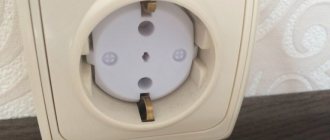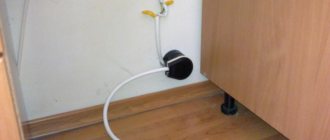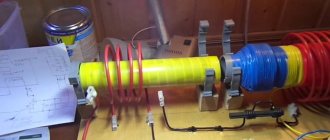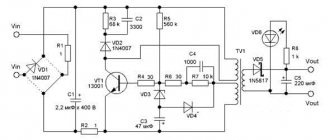Children's curiosity can lead to dire consequences if the home is not secured as much as possible. It is important to know how to protect sockets from children and hide the socket and plug. Today we will look at the most popular ways to protect your child from electrical outlets. These are methods that can be used at home without special equipment. We will also consider the most popular devices that you can buy in the store. We will tell you not only how to secure sockets from a child, but also how to use sockets with such protection, and how to remove the child protection.
Types of plugs for sockets
As the child grows up, he very quickly understands the connection between the outlet and the electrical appliance. Children insert fingers and scissors, screwdrivers and forks, nails and pins into sockets. This display of inquisitiveness becomes the main root cause of electric shock and fires from short circuits.
To protect children from electric shock, plugs are placed on sockets. Previously, they were sealed with strips of adhesive plaster and rubber plugs were inserted into them. Today you can see and buy a variety of protective devices in stores.
Main types of plugs:
- universal plug;
- plug with a special key;
- protective curtains;
- with a rotating mechanism,
- waterproofing plugs;
- protective cases for extension cords.
An everyday problem from a dangerous perspective: electricity and children
Parents, knowing the child’s desire to try what’s inside the socket or switch, conduct explanatory conversations with their child.
However, one cannot be sure that without parental control the desire to disassemble an electrical appliance or check the current in an outlet, as dad does, will not arise.
Regardless of the age of children, you need to worry about safety.
Sockets and switches in the house must be protected.
We will discuss further what this protection is like, how it works, and what its possible disadvantages are.
According to the norms and rules of “Design and Construction”, there are generally accepted standards that imply the possibility of installing sockets (relative to the floor) at a distance of 30 cm, switches - 85-90 cm. Therefore, even a small child is able to get to an unprotected electrical point.
Universal plug for sockets
Protects the child from possible contact with live contacts of sockets. Universal plugs do not require a special key, as they are removed from the socket using a paper clip or bobby pin. The design is made in such a way that a child will not be able to remove the plug with his hands.
Memo to caring parents
1. Choose the right model so that your child cannot cope with it. Rotary plugs are very dangerous. It won't take much time to figure them out. Therefore, in addition to the obstacles to the outlet themselves, you need to constantly monitor the child.
2. The most reliable way is plugs on the key. But what happens if you lose your key and your child finds it? Perhaps he will immediately go check it on all the outlets in the house.
3. Pay careful attention to the material from which the plugs are made; it should be a very durable plastic that will not collapse from constant “pulling out”.
4. Select the correct plugs for your types of outlets. It is important that they hold well due to the sealing parts.
For most modern sockets, plugs are widely available, but, unfortunately, telephone and radio sockets are very difficult to select such accessories. What to do in such a situation? You can make an insulating element with your own hands.
Plug with special key
These are dense plugs made of plastic, silicone or rubber with a narrow hole for a key. With one turn of the key, the plug is secured or, conversely, removed. Such devices will protect the baby from electric shock and protect the fidget from forbidden games with electricity.
Purpose
The main function of the plug in the socket is to protect the child from touching electrical contacts. However, this device also performs other tasks, including:
- Protect contacts from moisture.
- Protection against penetration of fine dust into the inside of the socket.
- Aesthetic function. Covering outlets with plugs can improve visual appeal.
Sockets with protective curtains
Inside the socket with enclosing curtains, a spring is installed on each hole. When connecting an electrical appliance to a socket, the two metal pins of the plug simultaneously press on both plastic curtains of the socket. The curtains are pulled back, the pins of the plug are connected to the contacts of the socket, and the electrical appliance is connected to the electrical circuit.
Both curtains can only be pulled back at the same time. If you try to press only one protective plastic curtain, for example, with a screwdriver, pencil or metal knitting needle, the curtains do not move back and the socket contacts remain closed.
Today you can find different models on sale:
- opening when pressed;
- rotary - up and down, or sideways;
- invoices;
- structures built into the block.
The only negative is the high price.
General safety rules
First of all, you should maximize the safety of using both the outdoor electrical outlets themselves and the tools and equipment connected to them, so you should follow several mandatory rules:
- There is a separate bag for an outdoor waterproof outlet. Be sure to install a circuit breaker in the panel separately for sockets on the street. You will use it quite often;
- No connections outside! One-piece cable from the panel to the socket itself, without connections and installation boxes outside the room;
- Do not leave sockets energized. The scheme for using outdoor waterproof sockets is somewhat different from the usual home one. You should turn on the outlet whenever you intend to use it and turn it off after use. This will extend the life of both the socket and the wires, and will also ensure maximum safety.
Plugs for sockets with a rotating mechanism
Modern plugs are more effective and convenient to use; they are presented on the market in a wide range, both in design and price. Installs quickly and easily. Suitable for all standard sockets. In order to gain access to the outlet, you need to turn it with a fork and that’s it. When you pull out the plug, the plug will automatically snap into place.
Why is this necessary?
Often, standard options insert one socket from the outside. This causes a lot of inconvenience during use. The cord will always get in the way when closing and opening a doorway.
Now there are high-quality moisture protection mechanisms to use all electrical appliances inside the wettest room in the apartment safe and sound. Everything is done to make you feel comfortable.
In addition, there will be no drafts. You can sit privately inside without any external stimuli.
Most often they use a hairdryer, washing machine, razor, hydromassage and water heater. All this will become much easier to do once you decide on the height of the outlets in the bathroom.
Protective cases for extension cords
Extension cords can be dangerous for children. In stores you can buy special pencil cases that block access to the extension cord. Pencil cases are sold with a length adjustment mechanism. Which is very convenient to use. Protective cases have connectors for plugs. It is better to choose products with an opaque lid. This will reduce the child's interest in extension cords.
Classification
Why do you need plugs for sockets? You can expect anything from children, especially restless and curious ones. They are able to find trouble where, it would seem, nothing threatens them. One of the most dangerous objects is an electrical outlet. To protect the child from electric shock, they resort to the help of the devices we are considering. Products are conventionally divided into three types:
- internal;
- rotary;
- castle
The first type consists of a plastic device that locks the socket by snapping it into place. The second type can be extracted using physical pressure. The third modification opens only after using a special key.
Models with the simplest design are included in the lowest price segment. A plug for an outlet with a more complex device will cost more. The highest cost is for high-strength locking systems.
The electrical goods market offers not only plugs for childproof sockets. There are also these types:
- Waterproofing. They are distinguished by increased density. Made from plastic. Equipped with additional protection made of rubber or silicone. After their installation, the flow of moist air to the internal parts of the outlet is completely blocked.
- Decorative plugs for sockets. It is better to hide the keys from children who show curiosity about these bright and beautiful details. Otherwise, attempts to open products with their help will not take long. The function of such models is to make the interior of the room more attractive. The samples are distinguished by unusual colors and shapes. Allows you to disguise the outlet.
- Plugs intended for socket boxes. They are designated as a variation of the previous type of product. If you still have open entrances in your wall after renovation, use these models to close them.
Quality is the main criterion!
Choose products made from high quality plastic. Only they provide reliability. What else should you pay attention to?
- Take a closer look at the sealing inserts. They must hold firmly. The characteristics of the seals play an important role in this case.
- The fastening elements must match the size of the outlet input. This way, you will eliminate the situation when the purchased product does not fit the existing equipment.
- A criterion that is not least important is the type of electrical outlet. Let's say that you are unlikely to be able to use the telephone input plug described in this article. The same can be said regarding radio points and other similar objects.
Use attachments
- On the wall behind the furniture;
- Behind the housings of household appliances;
- For hoods and air conditioners, sockets can be installed above cabinets, in which case they will not be visible from below;
- Built-in and overhead sockets under window sills;
- Mortise and overhead sockets inside wall cabinets above the countertop;
- Mortise and overhead sockets in countertop cabinets;
- Pull-out sockets built into furniture elements;
- Masking sockets to match the interior by color, pattern of pictures and shape;
- Installation of sockets in wall niches, secret doors, which have the same coating as the walls;
- Installation of sockets in the baseboard structure and in the floor and many other camouflage methods,
Useful tips Connection diagrams Principles of operation of devices Main concepts Meters from Energomer Precautions Incandescent lamps Video instructions for the master Testing with a multimeter
How and with what to close it?
There are many different methods, some of which will require special devices, but you can do without them. For example, this protruding part of the wiring can be hidden:
- The easiest option is to move furniture towards the dangerous object. Of course, this can be done if the device is not in use.
- If the socket is located in a place where it is inconvenient to use, you can simply get rid of it by disconnecting it from the cable and securely insulating the end.
It is best to have an electrician handle this, or you can invite him to reinstall the device.
Do you need repairs?
We have already renovated more than 500 apartments, we will be happy to help you too
Find out the cost of repairs











